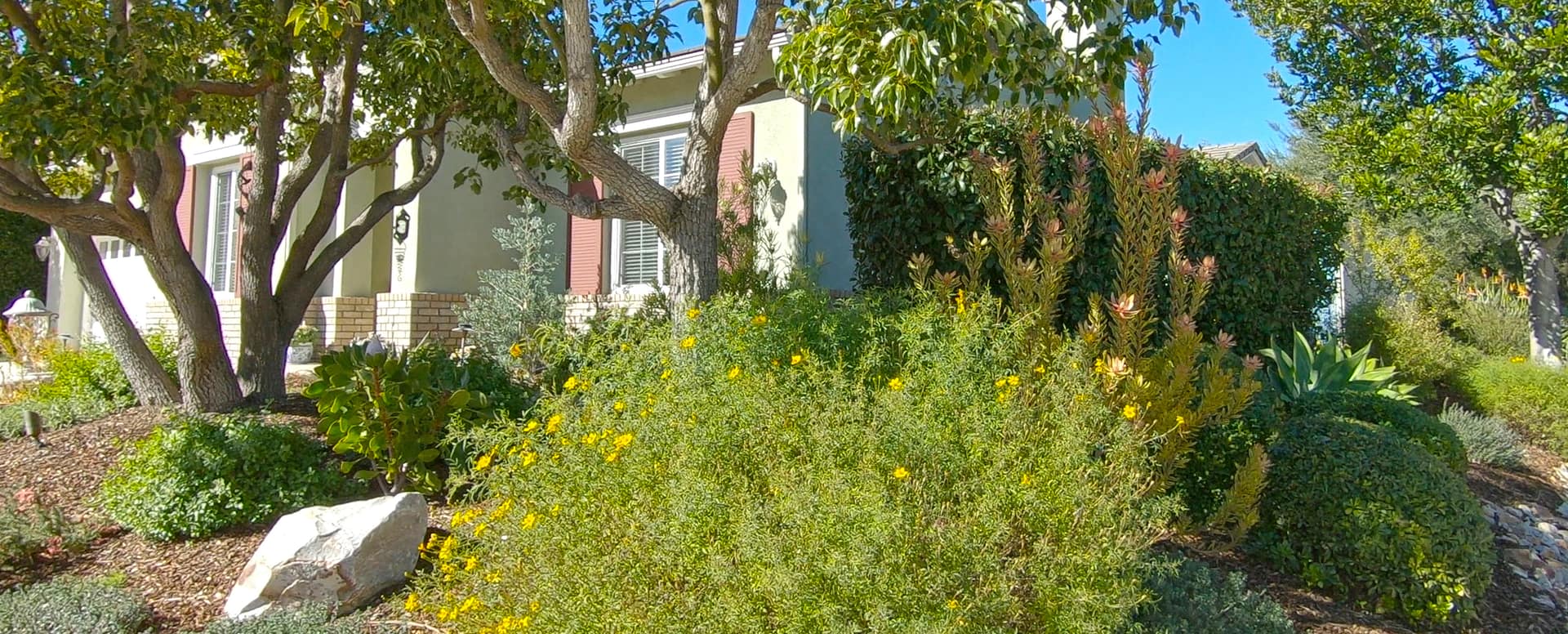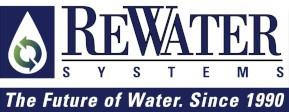
Living art
From our decades of hands-on experience, we understand landscaping is living art, and irrigation is how you keep that art blooming and green. Irrigating with greywater is no different in that regard.

Advanced controller
Any irrigation system starts with a controller capable of handling the amount of valves needed for your landscape’s microclimates, with multiple programs to accommodate different environmental demands.
ReWater’s highly advanced controllers have 156 functions operated by a simple dial with intuitive labeling. They can also operate conventional irrigation methods, such as sprinklers and rotors. There’s no need to purchase two controllers even if your landscape will utilize both conventional methods and underground greywater drip.

Professional installation
ReWater formerly held C27 Landscape Contractor’s License #798547 and provided full landscape installation services to customers who purchased our systems. We know what it takes to get this done correctly.
Installation of a ReWater system is now available anywhere in the US through a local licensed plumber for the state-required filter portion of our system and a local licensed landscaper versed in drip irrigation for the irrigation portion.
We encourage your professionals to watch ReWater’s technical support videos and to read our Owner’s Manual and Controller User’s Guide, available in English and Spanish. And technical support is available via phone, email, and text to all clients and their professionals Monday – Friday, year-round.

Underground drip via proprietary emitters
The California greywater code requires untreated greywater to be used underground and the underground emitters to be approved by the manufacturer for untreated greywater so they won’t clog up (CPC Section 1504.5.2.(2)
ReWater’s proprietary emitters are not only approved for untreated greywater, they have been proven to work over the very long term with untreated greywater.
Underground drip irrigation is well documented to save at least 30% and up to 60% on water use. This precise method of irrigation puts water at the root zones of only the plants you want to irrigate, regardless of wind. Underground drip also reduces misapplied water and eliminates run-off, the leading cause of water waste and of water pollution. It also reduces weed growth.
If another manufacturer says their drip emitters work underground with untreated greywater, ask them to provide that in writing. They will then refer you to their literature recommending that greywater be “treated” before it’s used in their emitters.
“Treated” is a legal term that usually involves a multi-million dollar tertiary disinfecting process as found at some municipal sewage treatment reclamation facilities. The greywater code was recently changed to allow NSF 350-certified systems to treat greywater, but NSF 350-approved systems cost a fortune to own and operate.
Less maintenance and costs required
Another advantage to underground drip is it remains safe from pedestrian traffic, rakes and other landscape maintenance tools, vandalism, and other common causes of damage to both sprinklers and surface drip tubing. You will save a fortune in maintenance costs!

Root-proof design
To defeat root intrusion, our emitters have an air-gap between the water orifice and the screen interface that separates the soil from the inside of the emitter. When irrigation stops, the resulting air-gap blocks roots from growing up into the orifice. The screen lets the roots come inside the emitter body to feed on the water and nutrients, but once inside the emitter, the roots find their food, and become aqueous to better absorb the moisture.

This process was documented by the Center for Irrigation Technology at CSU Fresno, as required by the California greywater code (Chapter 15 of the California Plumbing Code). Other emitters rely on toxic chemicals, copper, and invariably expensive maintenance to defeat root intrusion.
